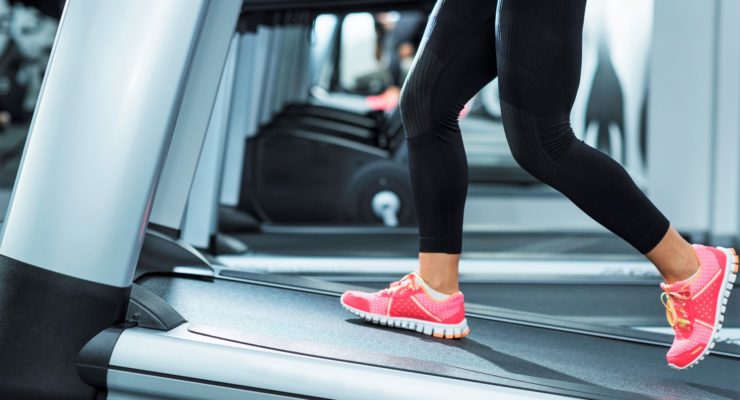3 Exercises for People who Hate Exercise
Article posted in: Fitness
Exercise can slash your risk of stroke, heart disease, diabetes and certain cancers by as much as half. And it lowers your risk of early death by 30 percent. It’s no wonder the Centers for Disease Control and Precention (CDC) recommends adults get 150 minutes per week of moderate-intensity aerobic activity, as well as two muscle-strengthening sessions each week.
But if you hate to exercise, none of that matters… because you won’t do it consistently. But exercise doesn’t have to mean going to the gym, being around intimidating people, and putting yourself on display. And it doesn’t have to mean doing a single rep of what you probably consider “exercise”—no pushups, sit-ups, squats or a single stride of jogging. You can get the activity to help your body at home while doing something you enjoy. Read on for three creative ways for people who hate exercise to burn some calories. And, as with any exercise program, consult your doctor before starting out.
1. Have a dance party with yourself.
There’s a reason Zumba classes are so popular right now: Light dancing is a surprisingly effective calorie burner. A 200-pound person can burn an estimated 150 calories in 30 minutes of shakin’. So go in your room, close the door, turn up your favorite tunes, and dance like no one is watching—because they aren’t!
Thirty minutes is equivalent to eight or 10 songs, so make your own ultimate dance party playlists: Rock out on air guitar if that’s your favorite, pretend you’re Beyonce for a while, or get yourself pumped up for the day with inspirational jams before your morning shower. If you find you’re loving this type of movement, and you’re ready to expand your exercise game beyond the comfort of home, consider signing up for a dance class or Zumba. Considering bringing a few friends in on the fun—going outside your comfort zone can be much easier with buddies.
2. Play video games (or read a book) on a treadmill or stationary bike.
Fitness magazines are forever espousing the benefits of high-intensity interval cardio, and with good reason: A 2014 study from the journal Obesity found that such intervals, where high-intensity work is alternated with bouts of slower exercise, were more time-efficient than “continuous,” steady-state exercise. But that study also found that these intervals were not better at redistributing fat than a continuous pace—the leanest athletes swear by walking or light biking, known as “low-intensity, steady state” (or “LISS”) cardio.
And the slow pace of LISS offers an opportunity: You can perform normally sedentary activities while you do it—like playing video games. “Treadmill gaming” combines the healthy aspects of taking a long stroll with the enjoyment of playing a game on your phone, your iPad, your gaming console, whatever! Enthusiasts online have lost as much as 100 pounds turning couch potato stuff into exercise, and offer this tip: Start with lower-action puzzle games or role-playing games to avoid “drift,” a phenomenon where the player moves left and right in time with the character, potentially causing injury.
And you don’t have to go to the gym to do it. If your home offers the space, check Craigslist for a free or inexpensive treadmill or exercise bike—there’s almost always someone giving away gym equipment if you’re willing to pick it up.
Not a gamer? Many strength coaches and fitness fanatics who love LISS strive for personal growth by listening to audio books or business podcasts while doing their long walks—Olympian Ryan Hall used to listen to Homer’s Odyssey while training for marathons. And if you’d rather read paper books, look for a free bike: It’s easy to pedal while you fly through a few chapters of your favorite.
3. Go for a few short walks throughout the day.
You may have heard that “sitting is the new smoking,” a clever catchphrase meant to drive home this point: Sitting at a desk all day increases your risk of disease and early death. Walking for just 10 minutes per day can counteract some of your all-day computer use, though: Scientists have found that after six hours in a chair, just 10 minutes on your feet got blood flowing correctly again, solving circulation problems caused by being sedentary.
Which is important: The CDC recommendations for exercise don’t have to be reached all at once. They’re about how much you move throughout the week, and five to 10 minutes at a time can add up. Just 10 minutes of walking has been shown in studies to give those on their foot a boost of creativity, an improvement in their mood and protection against memory loss later in life. Doing your walk outside can help you reconnect with nature and get some bone-strengthening Vitamin D.
So when a problem arises or an idea strikes at work, get up and walk to a coworker’s spot to talk about it. If you can’t come up with an idea, jump up and take a noontime stroll. Do your weekly call to Mom or another relative—or reconnect with an old friend—while walking through a local park. Give yourself little excuses to get a few more steps in, and it will never feel like you’re “working out.”













